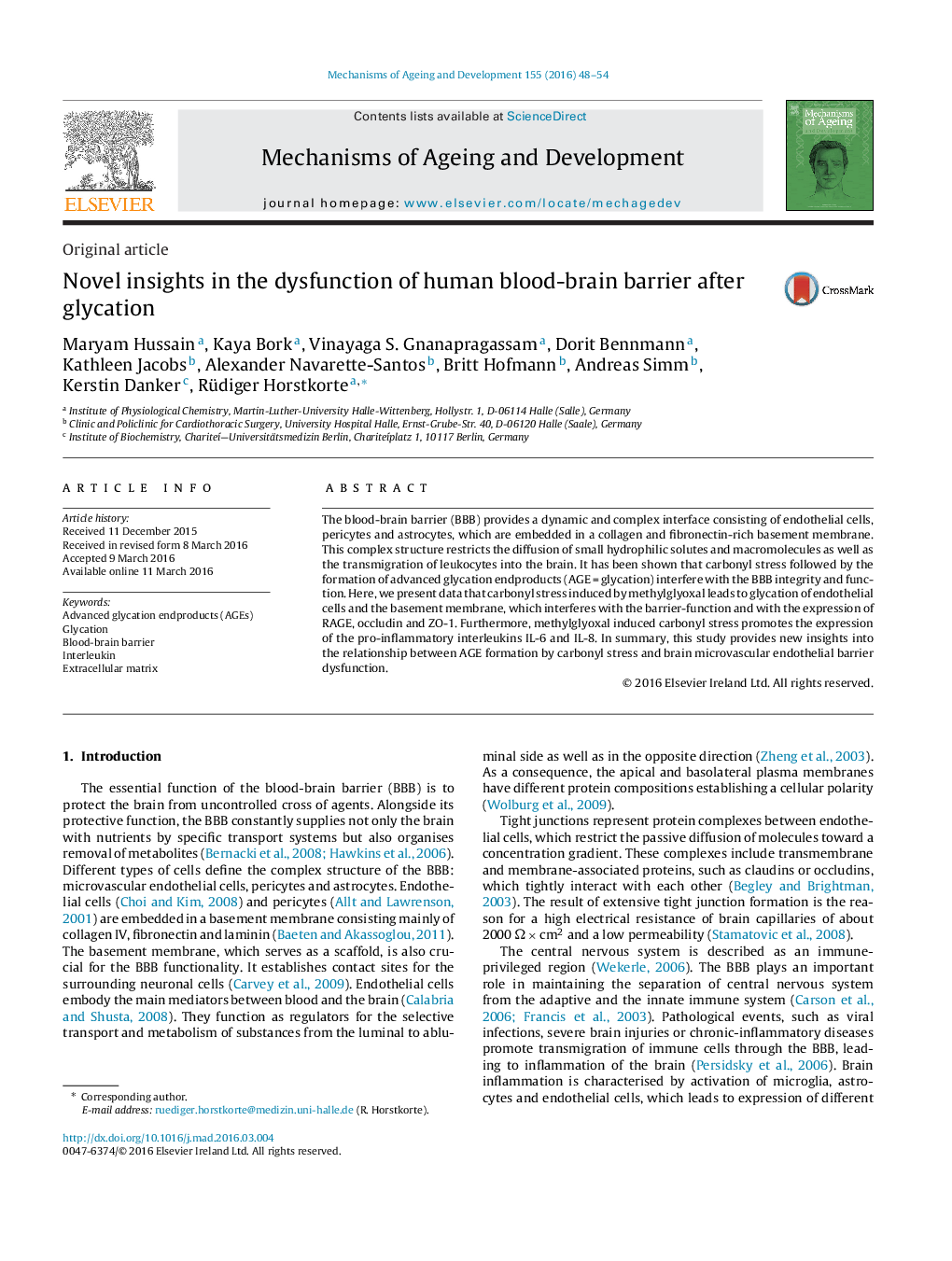| Article ID | Journal | Published Year | Pages | File Type |
|---|---|---|---|---|
| 1919158 | Mechanisms of Ageing and Development | 2016 | 7 Pages |
•We established blood brain barrier model.•Glycation leads to impaired function of the barrier.•Glycation induces a pro-inflammatory response.
The blood-brain barrier (BBB) provides a dynamic and complex interface consisting of endothelial cells, pericytes and astrocytes, which are embedded in a collagen and fibronectin-rich basement membrane. This complex structure restricts the diffusion of small hydrophilic solutes and macromolecules as well as the transmigration of leukocytes into the brain. It has been shown that carbonyl stress followed by the formation of advanced glycation endproducts (AGE = glycation) interfere with the BBB integrity and function. Here, we present data that carbonyl stress induced by methylglyoxal leads to glycation of endothelial cells and the basement membrane, which interferes with the barrier-function and with the expression of RAGE, occludin and ZO-1. Furthermore, methylglyoxal induced carbonyl stress promotes the expression of the pro-inflammatory interleukins IL-6 and IL-8. In summary, this study provides new insights into the relationship between AGE formation by carbonyl stress and brain microvascular endothelial barrier dysfunction.
